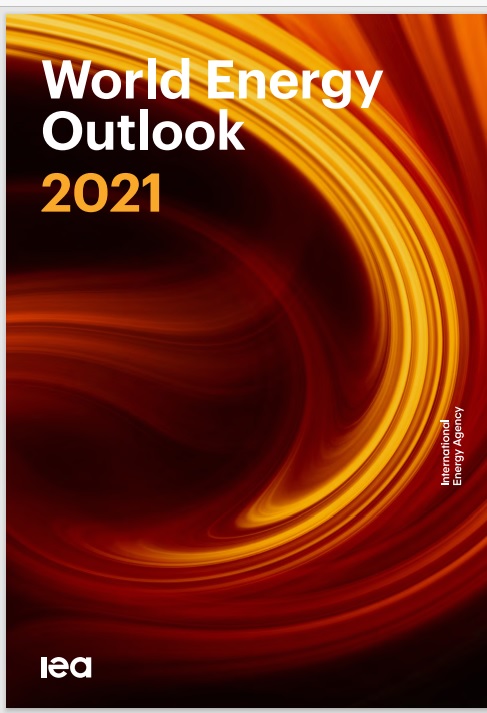Foreword
The World Energy Outlook (WEO) is usually published in November. However, for the second year in a row, the International Energy Agency (IEA) is releasing our flagship report a month early, in October. We did this last year because it was an exceptional year defined by the Covid-19 crisis. This year is another exceptional year because of the COP26 Climate Change Conference meeting in Glasgow. This COP – short for the Conference of the Parties, the main decision-making body of the United Nations Framework Convention on Climate Change – is particularly significant. It is the first test of the readiness of countries to submit new and more ambitious commitments under the 2015 Paris Agreement. It is also an opportunity – as the WEO-2021 states – to provide an “unmistakeable signal” that accelerates the transition to clean energy worldwide.
This year’s edition of the WEO has been designed, exceptionally, as a guidebook to COP26. It spells out clearly what is at stake – what the pledges to reduce emissions made by governments so far mean for the energy sector and the climate. And it makes clear what more needs to be done to move beyond these announced pledges towards a pathway that would have a good chance of limiting global warming to 1.5 °C and avoiding the worst effects of climate change.
For this, the analysis in WEO-2021 relies on our landmark report published earlier this year – Net Zero by 2050: A Roadmap for the Global Energy Sector – which is now an integral part of the pioneering energy modelling work that goes into producing the WEO each year.
The IEA’s work this year has demonstrated our commitment to leading clean energy transitions globally by enabling governments to understand what they need to do to put emissions into rapid and sustained decline. But we have also made very clear that countries’ transitions have to be secure, affordable and fair for all citizens. If governments do not ensure that these key elements are at the core of their policy making for the transformation of their energy sectors, then they risk failure
At the time of publication of this year’s WEO, governments are getting an advanced warning of this risk, with the prices of natural gas, coal and electricity rising to all-time highs in many regions. The key reasons for these sharp increases in energy prices are not related to efforts to transition to clean energy. They include a rapid economic rebound from last year’s pandemic-induced recession, weather-related factors, and some planned and unplanned outages on the supply side.
However, that does not mean clean energy transitions in the years ahead will be free from volatility. The current context underscores the value of the special analysis that we carried out for WEO-2021 on energy security risks in transitions. This analysis highlights the potential vulnerabilities that need to be on the radar screens of politicians and other decision makers as the world navigates this essential but deeply challenging era of change for our energy systems.
Successful transitions must be secure, or they will not happen fast enough to ward off catastrophic climate change. And they must have people at their centre, as the IEA has emphasised through the work of the Global Commission on People-Centred Clean Energy Transitions, which I convened in early 2021. Headed by Danish Prime Minister Mette Frederiksen, the Global Commission brings together national leaders, government ministers, civil society representatives and other prominent figuresto identify how to ensure that the transition to clean energy is fair and inclusive for everyone. It will publish its recommendations ahead of the start of COP26 at the end of October 2021
As always with the energy sector, investment is critical. The IEA has been warning for years that current investment levels in the global energy sector are inadequate – both to meet near-term energy needs and long-term transition goals. It is hard to understate the dangers inherent in today’s shortfall in spending on clean energy transitions, compared with the levels required. If we do not correct it soon, the risks of destabilising volatility will only grow as we move forward
Reaching the critical but formidable goal of net zero emissions by 2050 will require major efforts from across society – but it also offers major advantages in terms of human health and economic development. What comes through very clearly in this new WEO are the huge opportunities that come with clean energy transitions – for manufacturers of wind turbines, batteries, electrolysers and a host of other technologies. A new global energy economy is emerging, with the potential to create millions of decent jobs across a host of new supply chains. To make this a reality, government leaders in Glasgow must play their part by making the 2020s a decade of massive clean energy deployment.
Finally, I would like to thank the truly exceptional work – in extremely challenging times – by the team of IEA colleagues who worked so hard and so effectively on this WEO under the outstanding leadership of my colleagues Laura Cozzi and Tim Gould.
Dr Fatih Birol, Executive Director, International Energy Agency
To download the full report click on following link








Comment here